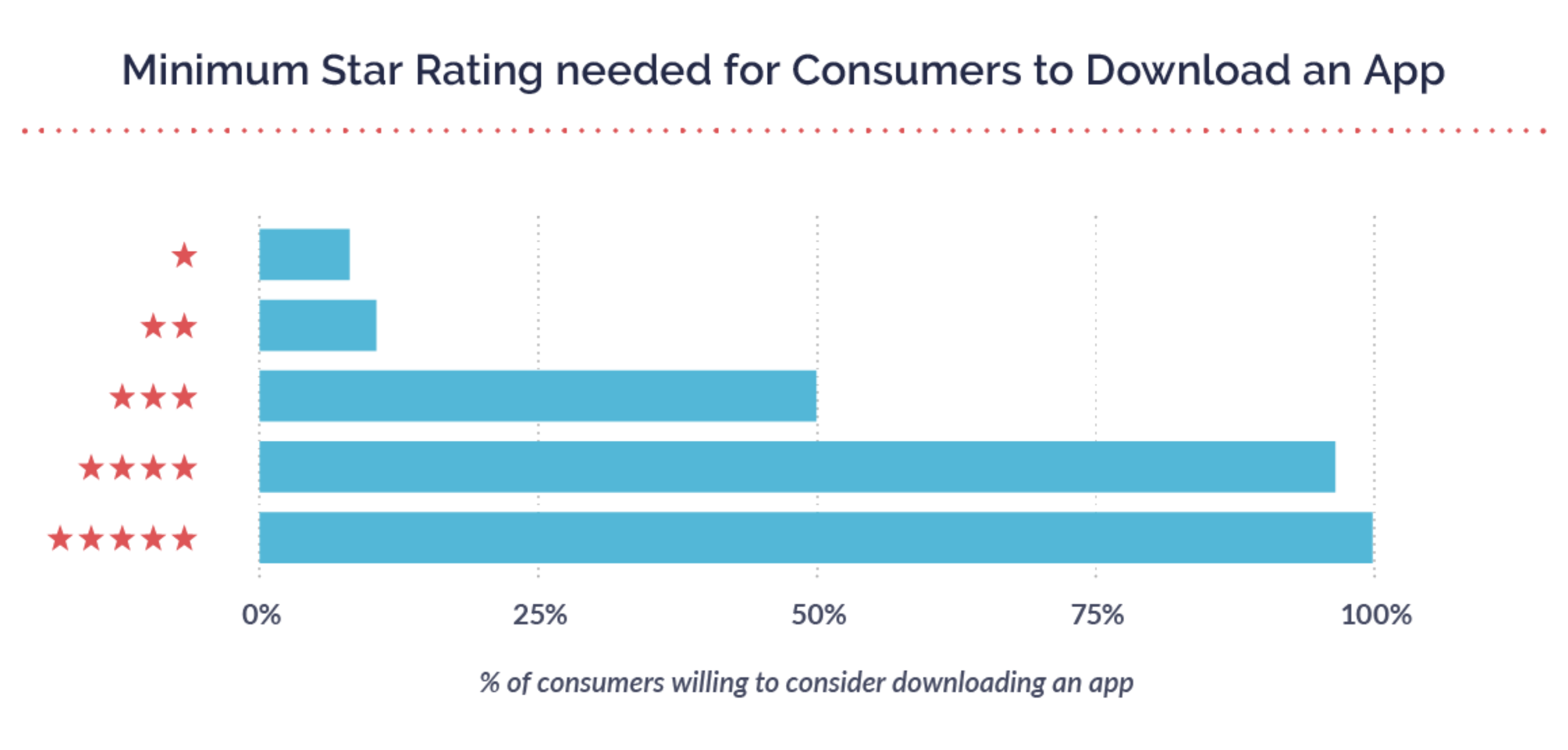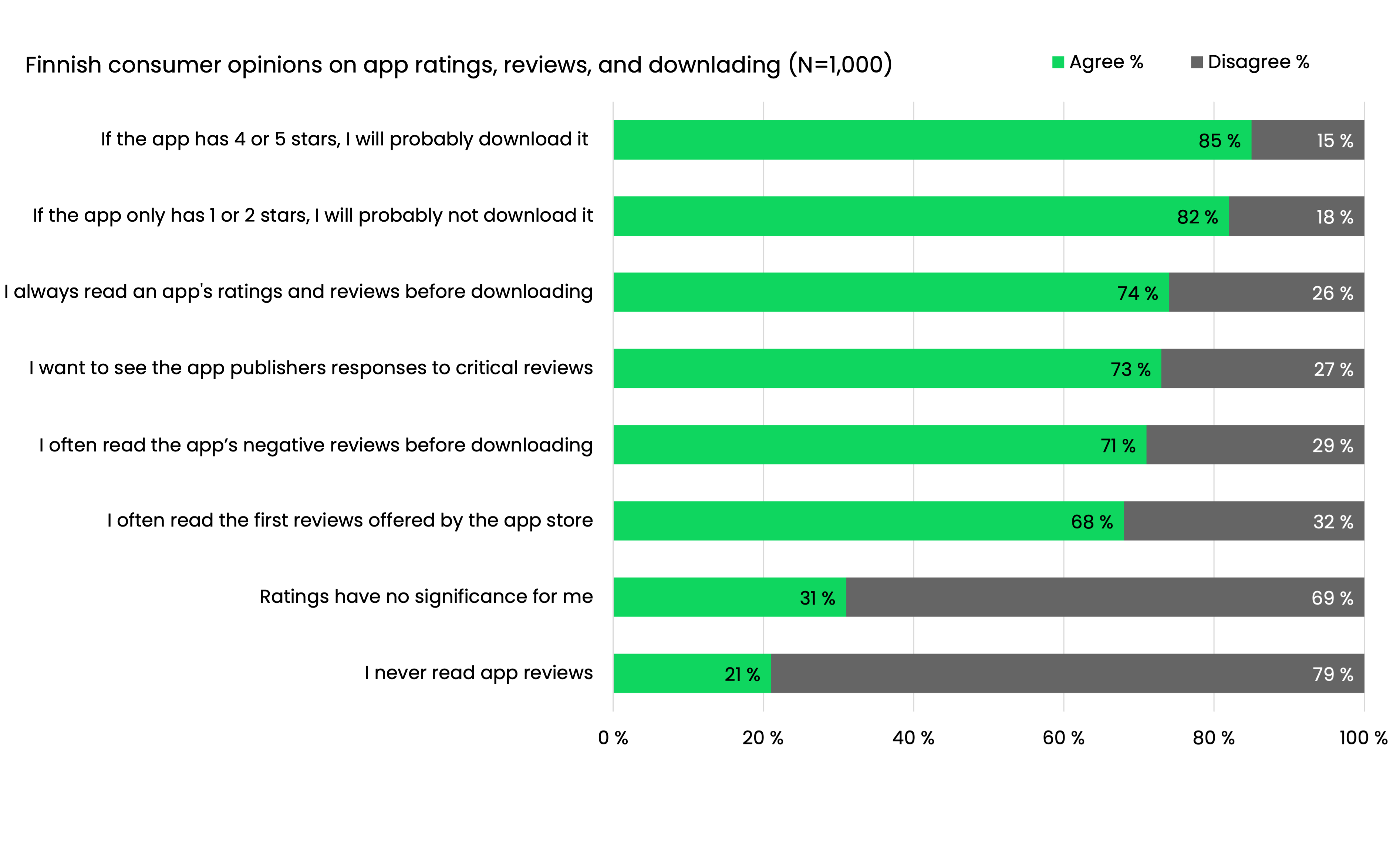
The best app store rating hacks in 2023
Application’s ratings in app stores are critical for the success of digital products, but they can influence bigger brands too.
App store rating hacking is an application store optimisation (ASO) technique applied by most successful apps. It means trying to improve an application’s ratings and reviews and thus its standing compared to the competition, as well as convince users that it’s worth downloading. While the goal remains sound, the “hacking” methods have changed with the evolution of Apple’s and Google’s application store policies.
Read this article to get an idea of the current opportunities for rating hacking, and the limitations imposed by the platforms. The article is inspired by K-Ruoka’s product team, including Qvik’s designer Jesse Ukkonen – they very recently worked their App Store rating from 2.2 to 4.4 stars in a couple of months.
We will write more about this soon, but you can already test Qvik’s app ratings simulator here.
Why work on app ratings?
Research consistently shows that consumers are sensitive to application ratings. If your app is stuck at below 3 stars, many users will think twice before downloading it. This can be critical for the product’s success if you are trying to build business with the app alone and compete with other similar products. You really need to achieve at least three stars to even be considered by the consumers.
This is not an issue limited to app-only products such as mobile games. Even brands that have a wider presence, such as web services, brick and mortar, or third-party retailers, can have their brand negatively affected by poor ratings. Data shared by AppTentive (by Alchemer) showed that a 1- or 2-star rating for a well-known brand’s app has a negative impact on the brand as a whole.

We have recently confirmed similar customer opinions among Finnish mobile users. Over 80% of consumers polled in 2023 show sensitivity to app ratings and over 70% of them also read the reviews. Consumers are particularly interested in critical reviews and developer responses.

Why do people rate and review apps?
App reviews, written feedback and star ratings have become a standard method for users to give feedback and communicate their success or frustration with the app.
Spontaneous feedback is usually very polarized. People are either ecstatic and super happy with the app or, more probably, infuriated with it because something has gone against their expectations or created some form of friction.
AppTentive says that companies usually receive spontaneous feedback from only 1% of their user base, while the “silent majority” (the 99%) never voice their opinion. The bottom 1% are very dangerous to the brand, whereas the silent majority conceals an opportunity for boosting reviews and countering the vocal, negative minority.
What’s an app store rating hack?
Hacking is a loaded word and does not fit too well in this context, because rating hacking does not have anything to do with illegitimate access to the application store. Rather, it is fully dependent on individual humans leaving favorable ratings for an app.
Rating hacking is best described as a collection of practices aimed at persuading users to leave positive reviews as a result of actual positive experiences with the product.
Historically, acquiring app reviews has been considered a possible, if not outright questionable, method of buying your way to the top. There are still companies selling positive app ratings and reviews as a service, but we don’t condone this practice or consider it to be a valid rating hacking method.
Paid reviews also go against platform guidelines and can have several negative consequences. First, it means that your $0.10 five-star reviews may be gone the next day if the account posting them becomes permanently banned from the platform. If it becomes obvious that you, as a publisher, have been complicit in the fake reviews, you will be warned, and in the worst case, your account and app could be banned.
Legitimate rating hacks
In short, hacking ratings works in the following ways, from most convenient to most disruptive:
- Make your product page more attractive in the application store
- Activate your users in happy moments to post reviews and ratings
- Respond to non-positive user reviews in the hope of persuading users to revise their ratings and reviews
- Improve your product to reduce the incidence of bad user experiences described in reviews
- Mitigate known bad rating risks by proactively capturing negative feedback privately inside the app instead of letting it flood over to the platform
- Report inappropriate reviews to the platform
- Reset App Store ratings during an updates
- Relaunch the app as a totally new app
Of these actions, activating users in happy moments deserves a bit of elaboration. It refers to prompting users to give feedback at the end of successful user journeys, when there is reason to believe that the user is as satisfied as possible with the app.
Rules of the game: what you can do on the platforms?
The previous list ended with two radical options: resetting ratings and releasing a completely new app. Resetting the ratings of an existing app is only available on the App Store, and the publisher can do that with every update if they choose. The reviews will remain, however. The only way to reset Google Play Store ratings or get rid of negative reviews anywhere is to release a brand new app. That’s probably never the preferred choice. The only remaining thing to do is to flag and report hostile reviews.
Looking at the easier options of the previous lists, a simple trick is to activate the silent majority with some well-placed prompts.
There are differences between the platforms in how you can activate users. For a few years now, iOS has been offering a built-in option for asking users to rate and review the app on the App Store. You can push the request no more than three times in a 365-day period. On Android, no such limitation exists and developers are free to implement the prompt as they see fit.

Further reading:
- Survey: The best-rated apps get the most downloads
- How many stars does your app have?
- Mobile App Ratings and Reviews: Where to Start and How to Win
Illustration: Aija Malmioja




